Image may be NSFW.
Clik here to view.
Clik here to view.
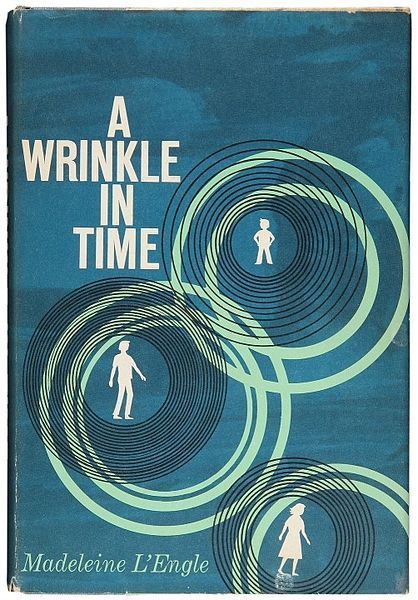
A Wrinkle in Time was considered essential reading in my home. My mother simply loved this book and, once she'd persuaded me to read it, so did I. It has all the elements: a strong female character that any adolescent girl could admire, a fantastical storyline, and travel to other planets. I've always loved stories about interstellar travel. The book revolves around something called the tesseract which allows the central characters to move through space at light-speed by folding, or wrinkling, time. I'd always assumed "tesseract" was one of those funny, made-up words. Obviously, I was incorrect and I only learned this years later when I began to work with sacred geometry and learned about the hypercube, aka, the tesseract.
A tesseract is a geometrical representation of fourth dimensional space. Aside from L'Engle's Wrinkle, it has figured into a number of science fiction and fantasy storylines. One of the more explicit examples is the short story "–And He Built a Crooked House–" by Robert Heinlein. It's a quick, entertaining read about an architect who designs a house based on an unfolded tesseract, which is to say this:
Image may be NSFW.
Clik here to view.
Clik here to view.
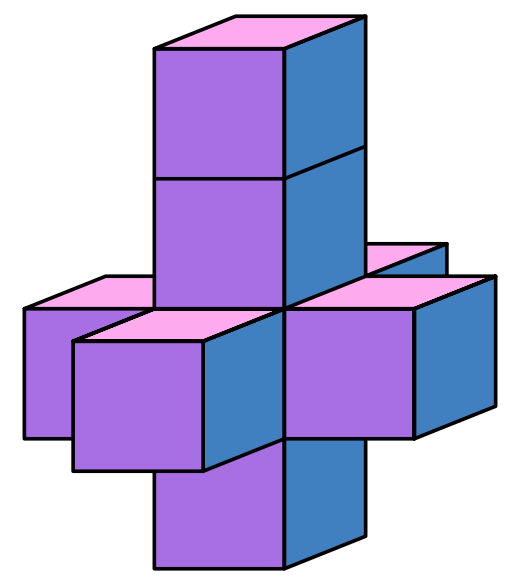
A minor earthquake causes the finished house to collapse into a singular cube form, which turns out to be an actual, working tesseract. In short, it is a very strange house, a kind of maze that the architect and buyers have a hard time escaping. Inside the cubical structure, all the rooms and floors seem to be in place but they loop back on themselves in bizarre and unpredictable ways. Some windows open out onto various geographical locations from their native California to New York.
Like Doctor Who's TARDIS, Heinlein's tesseract house is bigger on the inside than the outside. In its collapsed, re-enfolded form it makes me think of nothing so much as the TARDIS in "siege mode."As I wrote here, I've long thought the TARDIS was a tesseract. In "Flatline," the TARDIS is drained of energy by two dimensional beings. It shrinks.
Image may be NSFW.
Clik here to view.
Clik here to view.
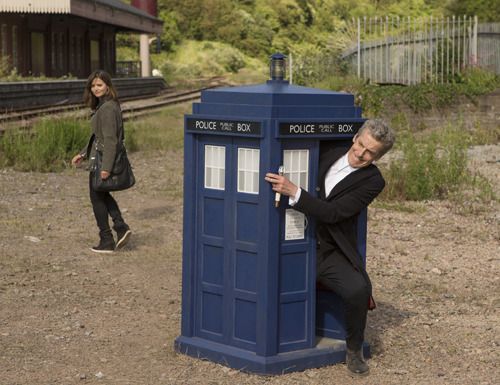
And it shrinks.
Image may be NSFW.
Clik here to view.![]()
Clik here to view.
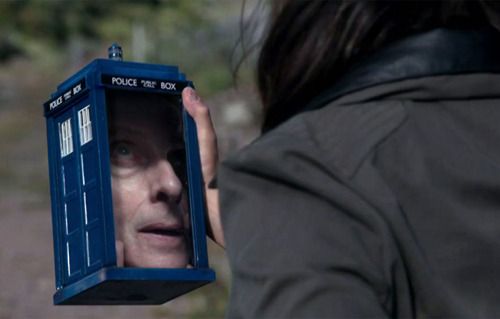
And it defends itself against the impact of an oncoming train by entering siege mode -- a cube only a few inches across -- both trapping and protecting the Doctor inside.
Image may be NSFW.
Clik here to view.![]()
Clik here to view.
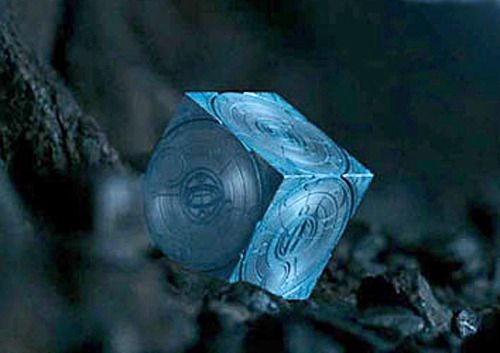
It bears a striking resemblance to the Pandorica, the inescapable prison meant to contain the Doctor.
Image may be NSFW.
Clik here to view.![]()
Clik here to view.
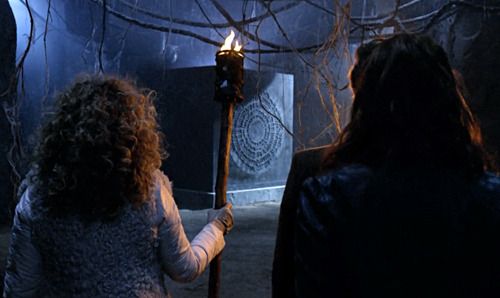
Needless to say, I no longer have any question that the TARDIS is a tesseract. The most explicit reference to Gallifreyan use of tesseract based technology is their hypercube messaging system. In "The Doctor's Wife," the Doctor is lured into a trap by a distress call from legendary Time Lord the Corsair.
Image may be NSFW.
Clik here to view.![]()
Clik here to view.
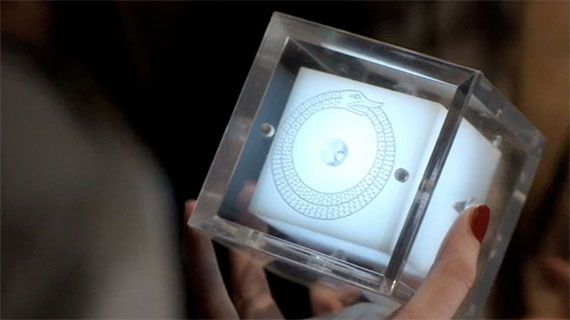
Sadly, he learns that it is a kind of Time Lord and TARDIS graveyard, where he meets the strangely familiar Idris. She tells him, "The little boxes will make you angry."
Image may be NSFW.
Clik here to view.![]()
Clik here to view.
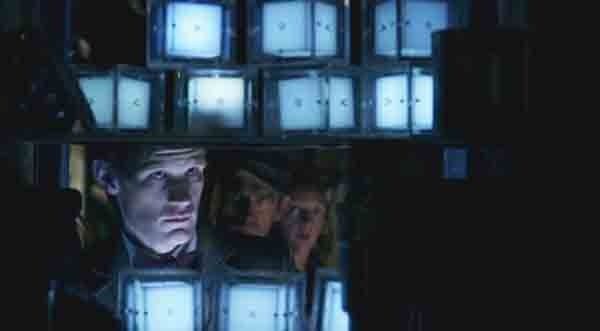
One of the more notable features of the various tesseract, hypercube forms depicted in the Doctor Who series is that they suggest wormhole opening capability. The hypercube messages travel through time and space like the TARDIS. The Corsair's is marked with his signature symbol, the Ouroboros. The Pandorica has circumpunct imagery on all sides and the siege cube is covered with circumpunct-like markings of Gallifreyan symbols.
That Doctor Who travels through wormholes has always been fairly obvious and got only more explicit over time. What is less obvious is exactly how, but tesseract-based technology is implied.
As the original book cover demonstrates (see above), A Wrinkle in Time is also about wormhole travel enabled by the tesseract. A TV movie based on the book also makes some elements of the book clearer and more explicit. For one thing, the book explains tesseract travel as fifth dimensional, which is not my understanding. Wikipedia gives a breakdown of the three polytopes that work in five dimensions, one of which involves multiple tesseracts.
In the movie, the tesseract is depicted explicitly as a fourth dimensional construct, underscored with wormhole imagery. In one scene, Dr. Dana Murry, can be seen trying to access information on a password protected website to explain her astrophysicist husband's mysterious disappearance. A wormhole is depicted at the bottom of the screen.
Image may be NSFW.
Clik here to view.![]()
Clik here to view.
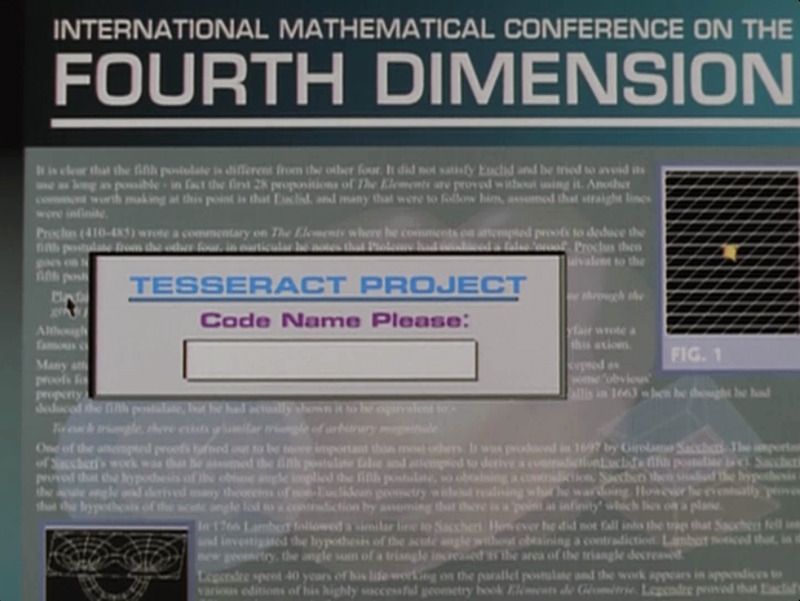
Image may be NSFW.
Clik here to view.![]()
Clik here to view.
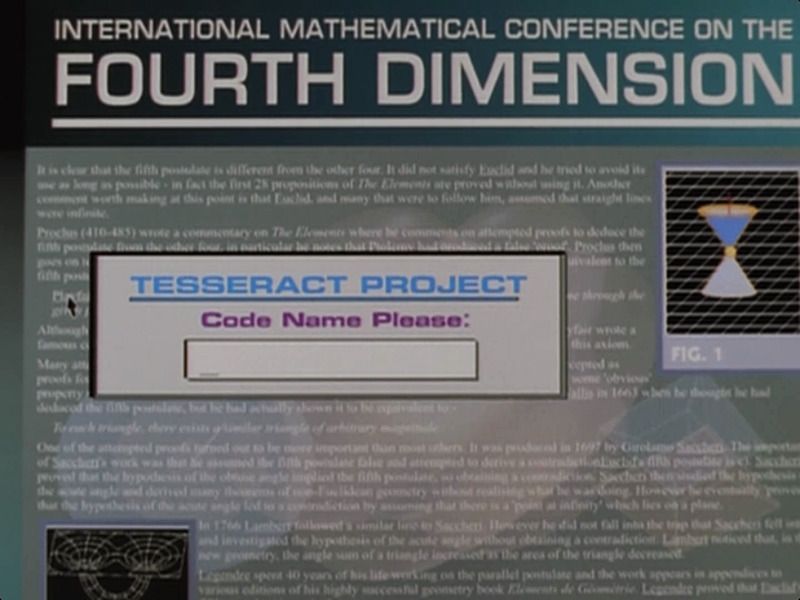
The hourglass, Mt. Meru shape keeps spinning in and out of form, depicted as figure 1.
Image may be NSFW.
Clik here to view.![]()
Clik here to view.
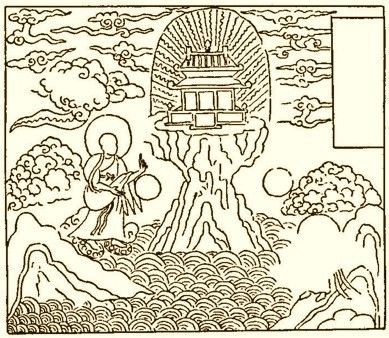
Cut to strange child prodigy Charles Wallace playing Boggle, as the camera closes in on the hourglass timer.
Image may be NSFW.
Clik here to view.![]()
Clik here to view.
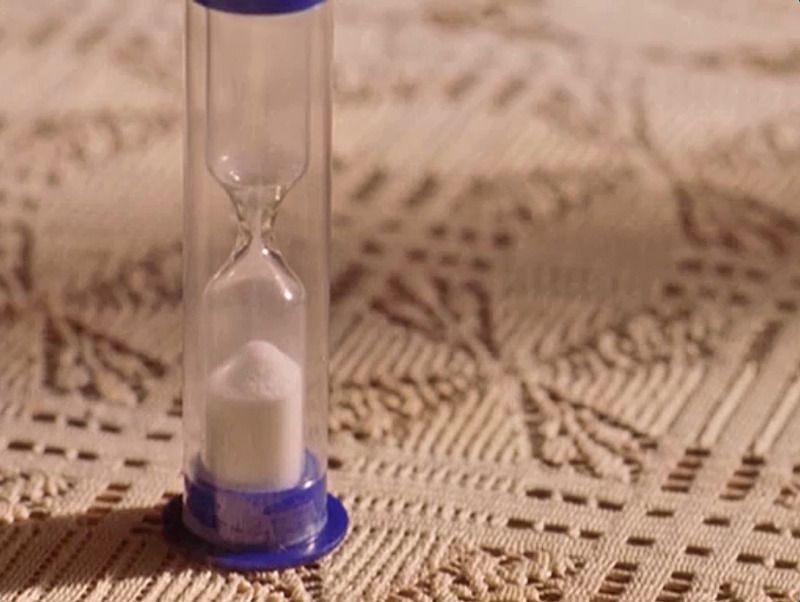
The movie, like the book, depicts the tesseract as a mysterious concept, barely understood by the few humans who know about it. The geometrical form is never shown, but it is implied, as in an early scene in which Mrs. Whatsit gestures toward the door and tells Dr. Murry that "there is such a thing in the real world as a tesseract and it works."
The door's window is made up of multiple square and rectangular panes of different sizes suggesting the idea of the tesseract. A door is a portal.
Image may be NSFW.
Clik here to view.![]()
Clik here to view.
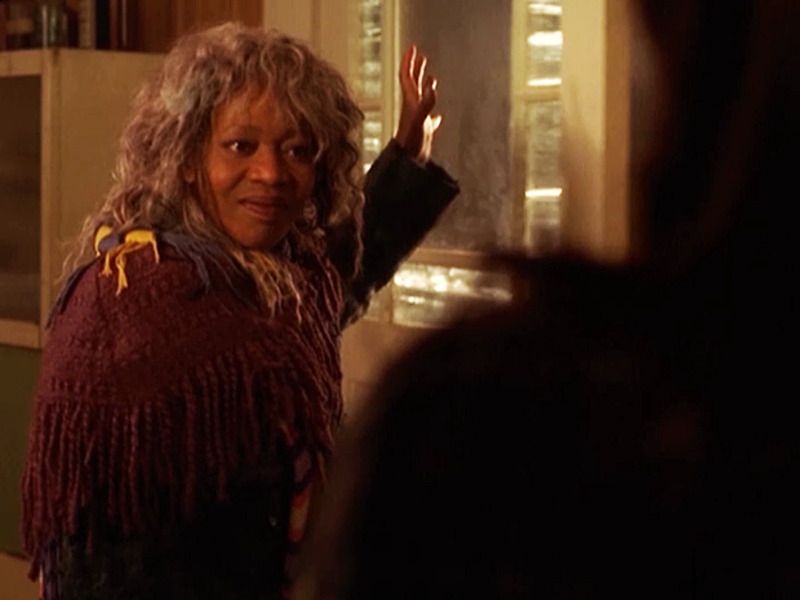
Not long after, Mrs. Whatsit opens a portal through space and time, pulling the children in her wake. To do this she transfigures herself into a shimmering light body, glowing like alchemical gold, iridescent like the mythical rainbow body. (See here and here.)
Image may be NSFW.
Clik here to view.![]()
Clik here to view.
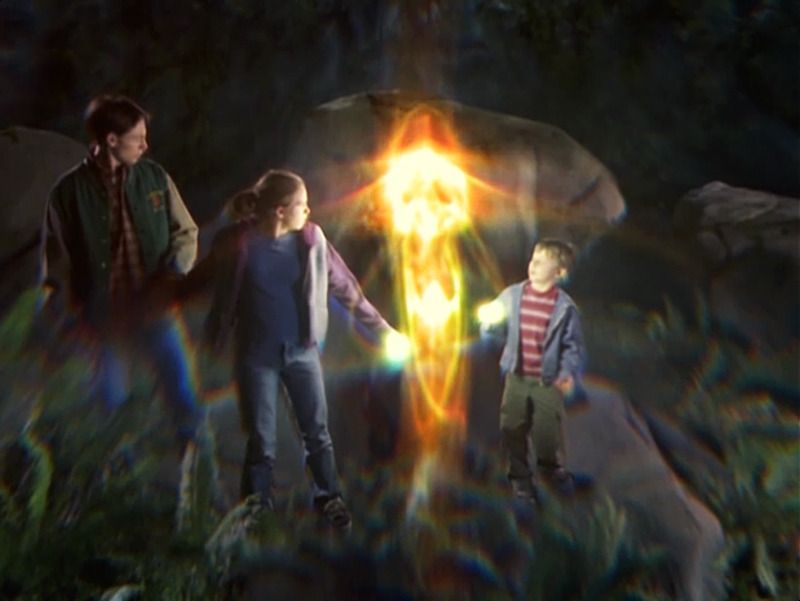
Young Calvin is mystified as to how they have arrived on a distant planet in another galaxy. Where was the spaceship? Mrs. Whatsit explains, "Spaceships are shiny toys for infant civilizations. The ultimate starship is here."
Image may be NSFW.
Clik here to view.![]()
Clik here to view.
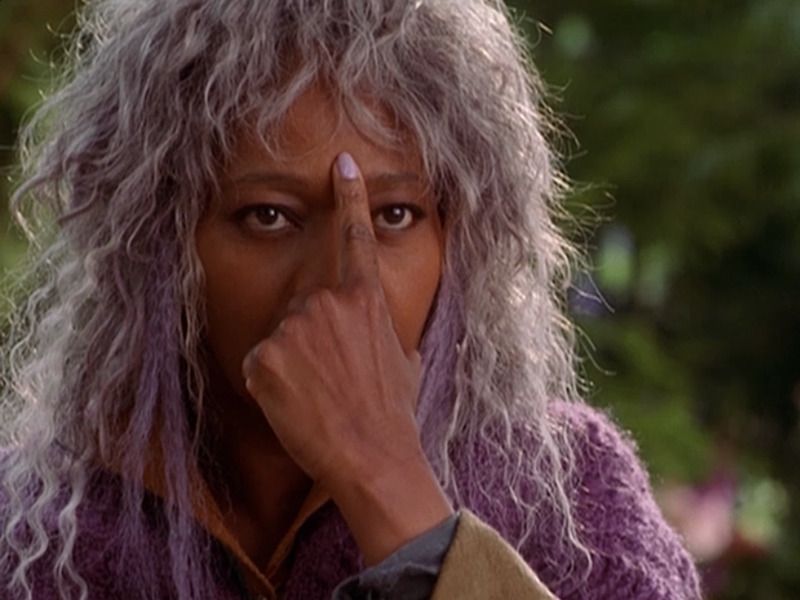
To the uninitiated it might seem as though she's pointing at her head to indicate the mind. But, Mrs. Whatsit is very carefully and deliberately pointing to her third eye.
Image may be NSFW.
Clik here to view.![]()
Clik here to view.

So, the tesseract represents a kind of transcendence, an alchemy. Salvador Dali described his painting Crucifixion (Corpus Hypercubus) as a work of "metaphysical, transcendent cubism."
Image may be NSFW.
Clik here to view.![]()
Clik here to view.
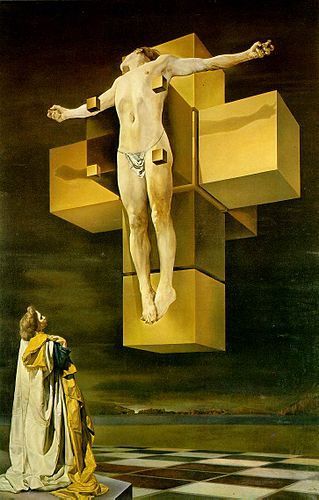
| "The cross is formed by an octahedral hypercube. The number nine is identifiable and becomes especially consubstantial with the body of Christ." ~ Salvador Dali |
Comments on this entry are closed, on this blog. If you wish to comment, please find this and all newer blog entries crossposted on Celestial Reflections.